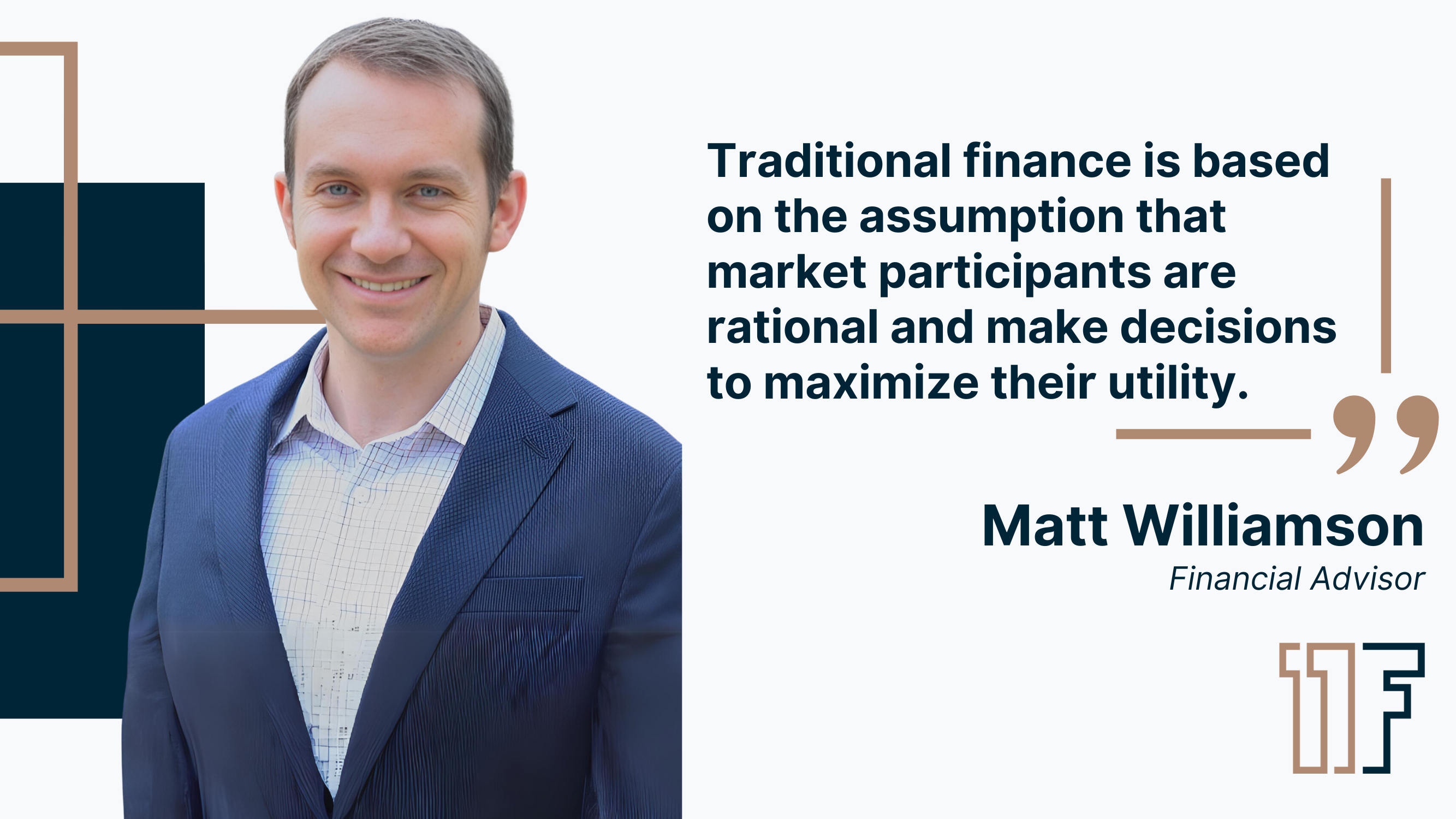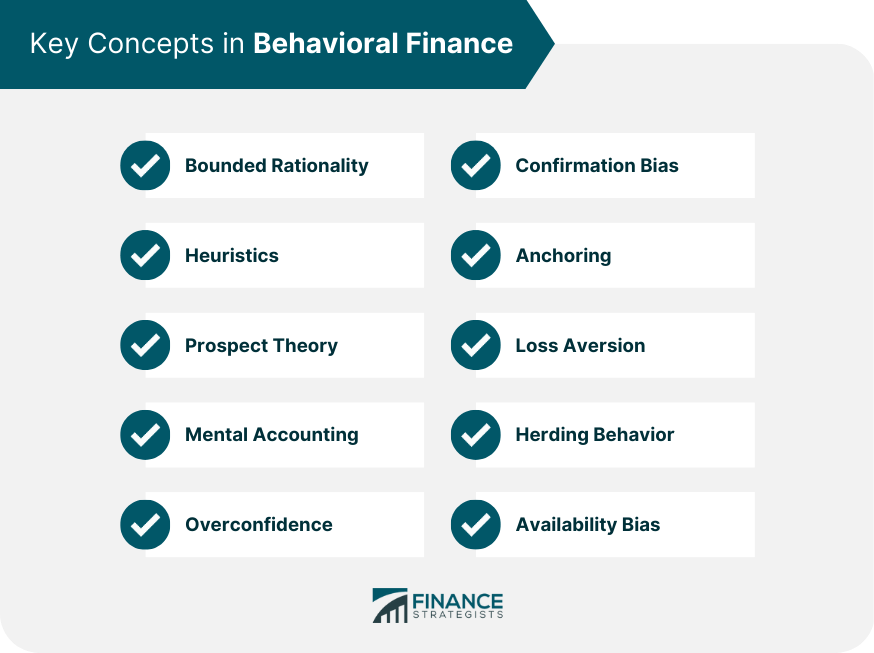Behavioral finance is a field of study that combines psychological theories with conventional economic and financial theories to understand the impact of cognitive biases and emotions on financial decision-making. Understanding behavioral finance is crucial for investors, financial professionals, and policymakers as it provides valuable insights into the psychological factors influencing financial decisions. Traditional finance is based on the assumption that market participants are rational and make decisions to maximize their utility. In contrast, behavioral finance acknowledges that individuals are often irrational, driven by cognitive biases and emotions that can lead to suboptimal financial decisions. Bounded rationality is the idea that individuals have limited cognitive resources, time, and information to make optimal decisions. As a result, people often rely on heuristics or mental shortcuts to simplify complex decision-making processes. Heuristics are mental shortcuts that individuals use to make quick and efficient decisions. While heuristics can be helpful, they can also lead to systematic errors or biases in judgment. Daniel Kahneman and Amos Tversky developed prospect theory as a cornerstone of behavioral finance. It posits that people evaluate financial outcomes based on gains and losses relative to a reference point rather than final wealth levels. Individuals are also more sensitive to losses than gains, exhibiting loss aversion. Mental accounting, introduced by Richard Thaler, refers to the tendency of individuals to categorize and evaluate financial transactions in separate mental accounts, which can influence their financial choices and risk-taking behavior. Overconfidence is a cognitive bias that causes people to overestimate their knowledge, skills, or ability to predict future outcomes. In finance, overconfidence can lead to excessive trading, under-diversification, and inadequate risk management. Confirmation bias is the tendency to seek, interpret, and remember information that confirms one's pre-existing beliefs while ignoring or discounting contradictory evidence. This bias can contribute to investment mistakes, such as holding onto losing positions or overlooking red flags. Anchoring refers to the tendency of individuals to rely heavily on the first piece of information they encounter when making decisions. In financial contexts, anchoring can lead to irrational pricing and investment decisions based on arbitrary reference points. Loss aversion is the tendency for individuals to prefer avoiding losses over acquiring equivalent gains. This bias can lead to risk-averse behavior when facing potential gains and risk-seeking behavior when facing potential losses. Herding behavior is individuals' tendency to follow a larger group's actions or beliefs, even if it contradicts their own judgment or available information. In finance, herding can contribute to market bubbles and crashes. Availability bias is the tendency to rely on readily available information or recent experiences when making decisions, often leading to a distorted perception of probabilities and risks. Representativeness bias is the tendency to judge the likelihood of an event or the accuracy of a hypothesis based on its similarity to a particular category or prototype. Conservatism bias refers to the tendency to underreact to new information, maintaining prior beliefs or forecasts even when presented with evidence that contradicts them. Hindsight bias is the inclination to believe, after an event, that one would have predicted or expected the outcome. This bias can distort the perception of investment performance and contribute to overconfidence in future decision-making. Recency bias is the tendency to overemphasize the importance of recent events or data when making decisions. In finance, recency bias can result in investors chasing recent market trends or overreacting to short-term performance, neglecting long-term fundamentals. Self-serving bias is the tendency to attribute successes to one's own abilities or actions and failures to external factors. In finance, self-serving bias can lead to overconfidence, underestimation of risks, and a reluctance to admit or learn from mistakes. The endowment effect is the tendency to value an asset more highly when it is owned compared to when it is not. This bias can cause investors to hold onto underperforming assets or demand higher prices when selling, leading to suboptimal portfolio management. Regret aversion is the tendency to avoid making decisions that could lead to feelings of regret, often causing individuals to be overly cautious or to follow the crowd. In finance, regret aversion can result in inaction, missed opportunities, or herding behavior. The disposition effect refers to the tendency of investors to sell winning investments too early while holding onto losing investments too long. This behavior is driven by the desire to avoid regret and the effects of loss aversion and mental accounting. Gambler's fallacy is the belief that the probability of future events is influenced by past events, even when the events are independent. In finance, this fallacy can cause investors to make irrational decisions based on perceived patterns in market data or stock prices. Emotional biases are irrational decision-making tendencies driven by emotions, such as fear, greed, or hope, rather than objective information or analysis. Overreaction and underreaction refer to the tendency of investors to react excessively or insufficiently to new information, often driven by emotions. Overoptimism and pessimism are emotional biases that cause individuals to have an unrealistically positive or negative outlook on future events or investment outcomes. Fear and greed are powerful emotions that can significantly influence financial decision-making. The affect heuristic is the tendency to make decisions based on the emotional responses or feelings associated with a particular choice rather than objective analysis or information. The sunk-cost fallacy is the tendency to continue investing in a project or asset based on the amount of resources already invested rather than evaluating the current and future value of the investment. Status quo bias is the preference for maintaining current affairs, even when change could result in improved outcomes. In finance, status quo bias can result in investors maintaining suboptimal portfolios, resisting change in investment strategies, or overlooking new opportunities. Market anomalies are patterns or occurrences in financial markets that deviate from the predictions of traditional finance models, often attributed to the influence of behavioral biases. The momentum effect is the tendency of assets that have recently experienced high returns to continue outperforming and assets with low returns to continue underperforming. The reversal effect is the phenomenon where assets that have experienced extreme short-term gains or losses tend to revert to their mean performance over time. Calendar anomalies are asset return patterns associated with specific calendar periods or events. Some common calendar anomalies include: The January effect is the tendency for stocks, particularly small-cap stocks, to experience higher returns in January compared to other months. The weekend effect is the phenomenon where stock returns are generally lower on Fridays and higher on Mondays. The holiday effect refers to the tendency for stock prices to increase around holidays or during shortened trading weeks. Value stocks are those that are considered undervalued based on their financial fundamentals, while growth stocks are those with higher-than-average growth potential. The size effect is the tendency for smaller companies to generate higher risk-adjusted returns compared to larger companies. The post-earnings announcement drift is the tendency for stock prices to continue drifting in the direction of an earnings surprise, even after the initial market reaction. Market anomalies serve as evidence of the influence of behavioral biases on financial markets, challenging the assumptions of market efficiency and rationality in traditional finance models. Behavioral finance can help individuals recognize and address their own cognitive biases and emotional tendencies, leading to better financial decision-making and improved investment outcomes. In corporate finance, understanding behavioral biases can help managers make more informed decisions regarding capital allocation, risk management, and mergers and acquisitions. Portfolio managers can apply behavioral finance principles to construct diversified portfolios, taking into account investors' risk tolerance, loss aversion, and other behavioral factors. Behavioral finance can inform retirement planning by helping individuals recognize and overcome biases that may hinder their ability to save adequately, invest wisely, and make appropriate decisions regarding pensions and annuities. Incorporating behavioral finance into risk management can help organizations and individuals identify and address biases that may lead to excessive risk-taking or underestimating potential risks. Understanding the impact of behavioral biases on market efficiency and asset pricing can help investors, financial professionals, and policymakers develop strategies to mitigate market inefficiencies and improve overall market stability. Behavioral finance insights can be applied to public policy initiatives, such as designing pension systems, promoting financial literacy, or implementing regulations that protect investors from the consequences of irrational decision-making. Critics argue that behavioral finance may overstate the prevalence and impact of cognitive biases and emotional influences, leading to an overly negative view of human decision-making abilities. Quantifying the effects of behavioral biases on financial decision-making and market outcomes can be challenging, making it difficult to develop precise models or to measure the effectiveness of interventions designed to address these biases. The insights of behavioral finance could be misused by financial professionals or organizations seeking to exploit individuals' cognitive biases and emotional tendencies for their own benefit. Integrating behavioral finance insights with traditional finance models and practices can be complex, as it requires reevaluating long-held assumptions and developing new tools and frameworks. Behavioral finance is an interdisciplinary field that combines psychological theories with conventional economic and financial theories to understand the impact of cognitive biases and emotions on financial decision-making. The key concepts in behavioral finance, such as bounded rationality, heuristics, prospect theory, mental accounting, and biases like overconfidence, confirmation bias, and loss aversion, highlight the irrational financial choices people make, deviating from the assumptions of traditional finance models. Behavioral finance is crucial for investors, financial professionals, and policymakers as it provides valuable insights into the psychological factors influencing financial decisions, ultimately improving financial outcomes and market efficiency. By studying market anomalies, researchers and practitioners can better understand the impact of cognitive and emotional factors on asset pricing and investment decision-making. However, critics argue that behavioral finance may overstate the prevalence and impact of cognitive biases and emotional influences, and integrating behavioral finance insights with traditional finance models and practices can be challenging. Nonetheless, behavioral finance insights can be applied to personal finance, corporate finance, retirement planning, risk management, and public policy initiatives, leading to better financial decision-making and improved investment outcomes.What Is Behavioral Finance?
This interdisciplinary approach helps explain why people often make irrational financial choices, deviating from the assumptions of traditional finance models.
By identifying and addressing these biases, individuals, and organizations can make better-informed decisions, ultimately improving financial outcomes and market efficiency.
Key Concepts in Behavioral Finance
Bounded Rationality
Heuristics
Prospect Theory
Mental Accounting
Overconfidence
Confirmation Bias
Anchoring
Loss Aversion
Herding Behavior
Availability Bias

Cognitive Biases in Financial Decision-Making
Representativeness Bias
In finance, this bias can cause investors to incorrectly assess the performance of an investment or company based on superficial resemblances to other successful investments or companies.Conservatism Bias
In financial decision-making, conservatism bias can lead to slow adjustments in investment strategies and a failure to capitalize on market opportunities.Hindsight Bias
Recency Bias
Self-Serving Bias
Endowment Effect
Regret Aversion
Disposition Effect
Gambler's Fallacy
Emotional Biases in Financial Decision-Making
Overreaction and Underreaction
Overreaction can lead to market bubbles or crashes, while underreaction can result in missed opportunities or slow adjustments to changing market conditions.Overoptimism and Pessimism
These biases can lead to excessive risk-taking, inadequate diversification, or overly conservative investment strategies.Fear and Greed
Fear can cause investors to avoid risks, sell assets prematurely, or remain on the sidelines during market opportunities. Greed can lead to excessive risk-taking, overtrading, or chasing market trends.Affect Heuristic
In finance, the affect heuristic can lead to irrational investment decisions driven by emotions such as fear, excitement, or attachment to specific assets or companies.Sunk-Cost Fallacy
This bias can lead to poor investment decisions and an unwillingness to cut losses when necessary.Status Quo Bias
Market Anomalies and Behavioral Finance
Definition of Market Anomalies
Momentum Effect
This anomaly can be explained by investors' overreaction, underreaction to new information, and herding behavior.Reversal Effect
This anomaly can be attributed to investors' overreaction to recent events and the subsequent correction of mispricing.Calendar Anomalies
January Effect
Weekend Effect
Holiday Effect
Value and Growth Stocks
Behavioral finance theories suggest that value stocks tend to outperform growth stocks due to investors' overreaction to negative news or underreaction to positive news, leading to mispricing.Size Effect
This anomaly can be attributed to behavioral biases such as investors' neglect of small-cap stocks and the overestimation of large-cap stocks' growth potential.Post-earnings Announcement Drift
Investors' underreaction can explain this anomaly to new information and the gradual incorporation of the news into stock prices.The Role of Market Anomalies in Behavioral Finance
By studying these anomalies, researchers and practitioners can better understand the impact of cognitive and emotional factors on asset pricing and investment decision-making.Applications of Behavioral Finance
Personal Finance and Investing
Corporate Finance
Portfolio Management
Retirement Planning
Risk Management
Market Efficiency and Pricing
Behavioral Economics and Public Policy
Critiques and Limitations of Behavioral Finance
Overemphasis on Biases and Irrationality
Difficulty in Quantifying Behavioral Factors
Potential for Misuse
Challenges in Integrating Behavioral Finance With Traditional Finance
Conclusion
Behavioral Finance FAQs
Behavioral finance is a field of study that combines psychology and finance to understand how individuals and groups make financial decisions and how their behavior affects financial markets.
Some common biases studied in behavioral finance include anchoring bias, confirmation bias, overconfidence bias, and loss aversion bias.
Traditional finance assumes that individuals are rational and make decisions based on available information. Behavioral finance recognizes that individuals are prone to cognitive biases and emotions that can influence their decision-making.
Investment managers can use behavioral finance concepts to understand better how investors make decisions and to develop investment strategies that account for behavioral biases. For example, they can use prospect theory to design investment portfolios that minimize the impact of loss aversion.
Critics of behavioral finance argue that it overemphasizes the role of psychology in financial decision-making and overlooks the importance of rational analysis. Some also argue that it is difficult to test behavioral finance theories empirically.















